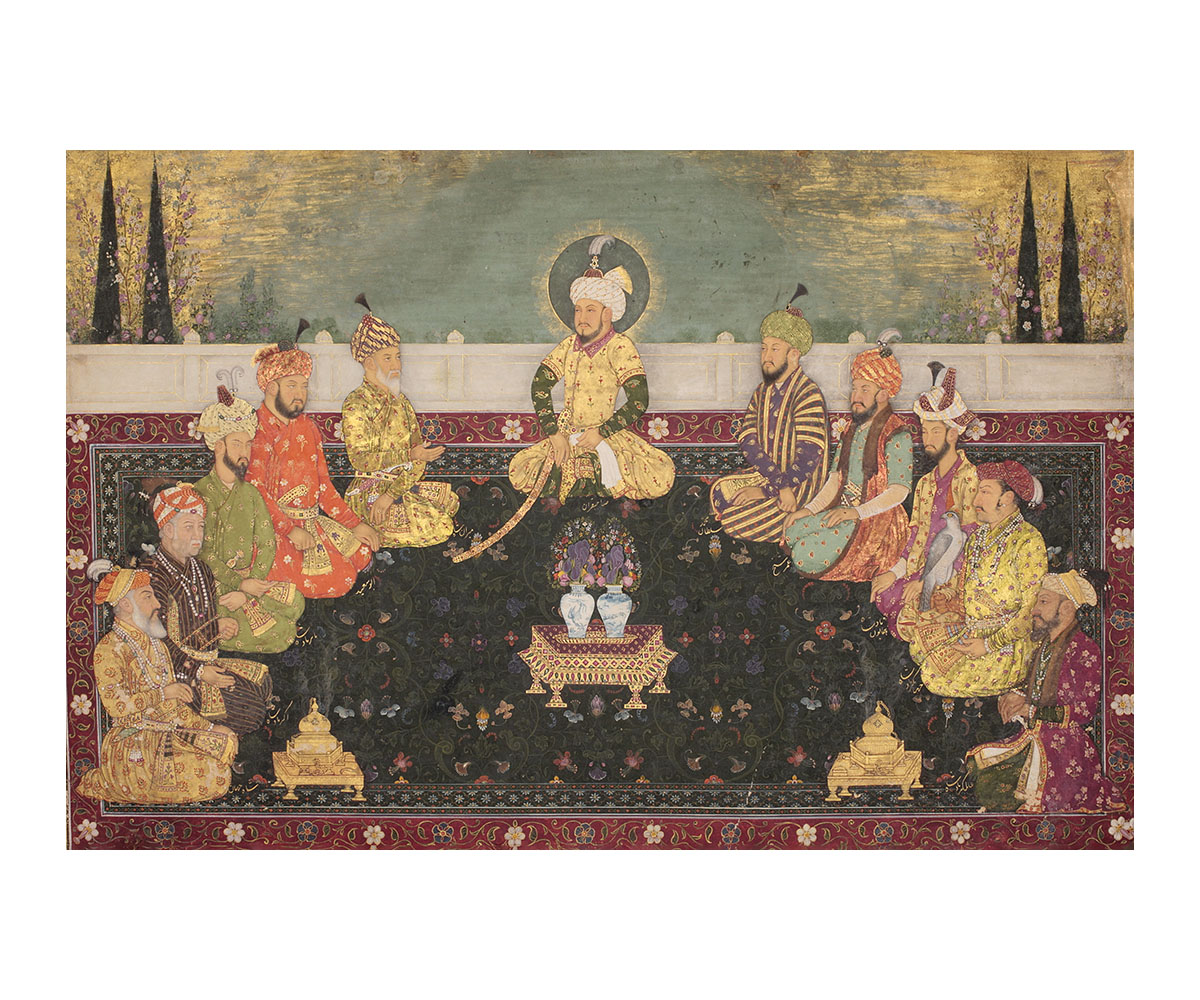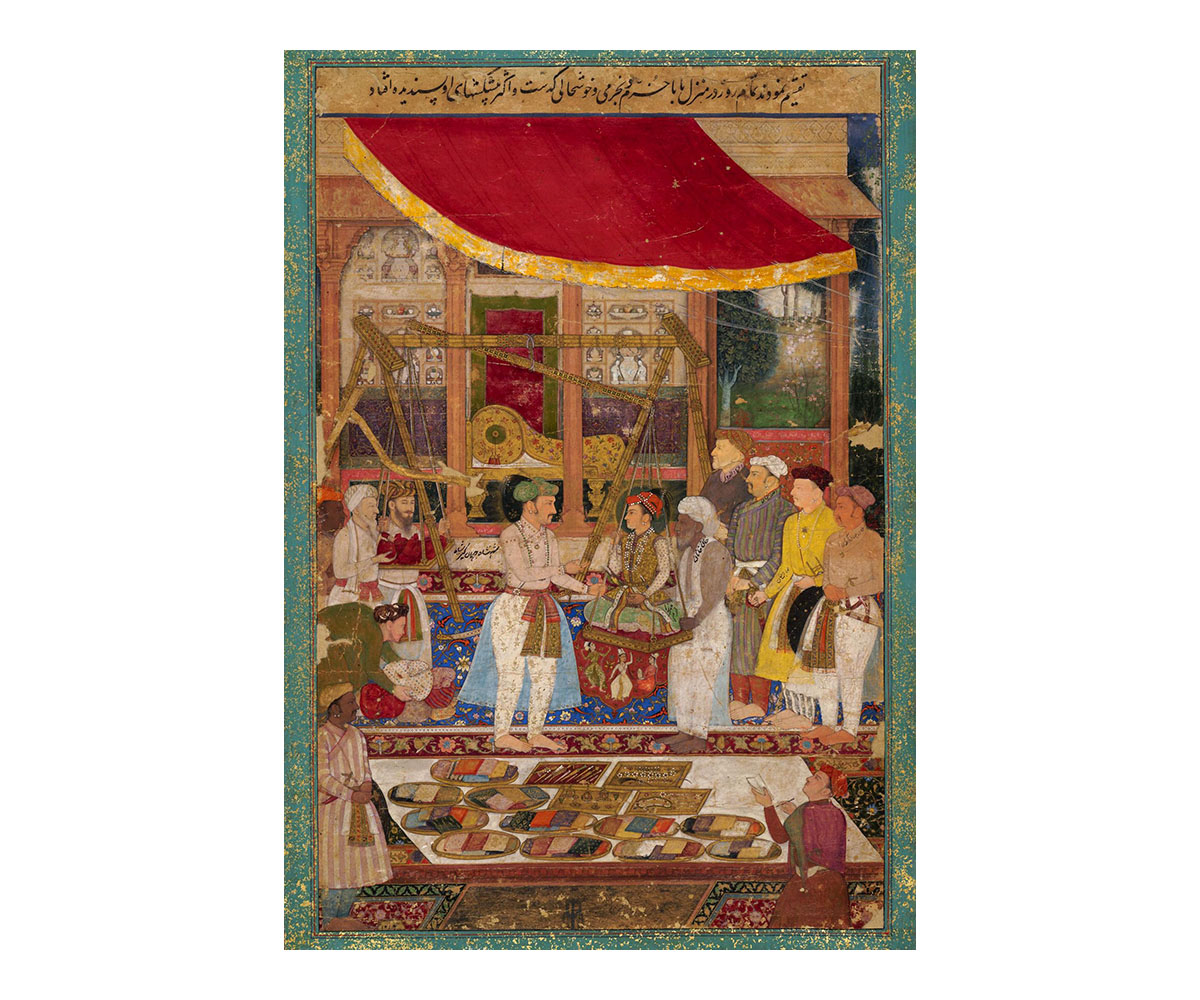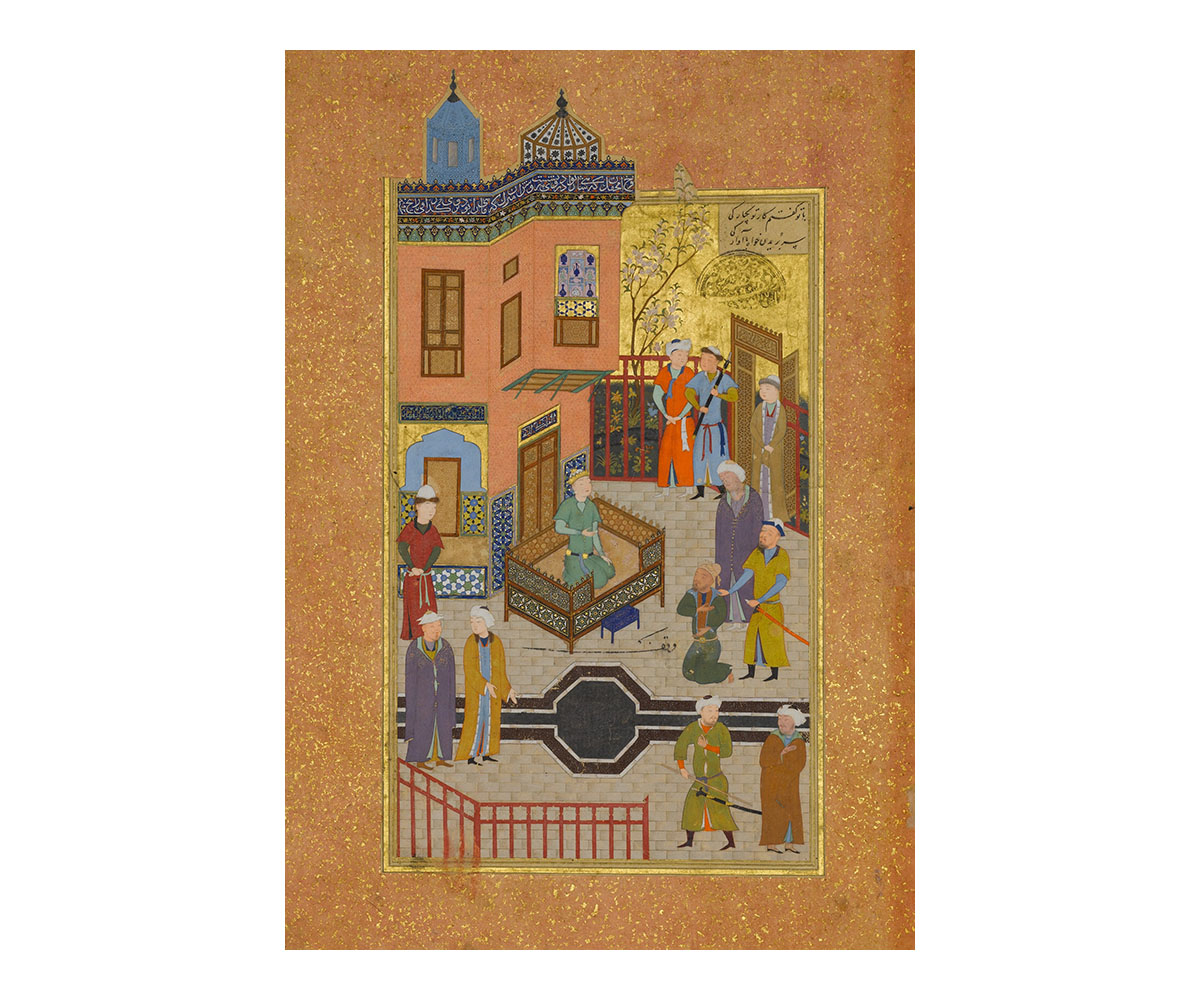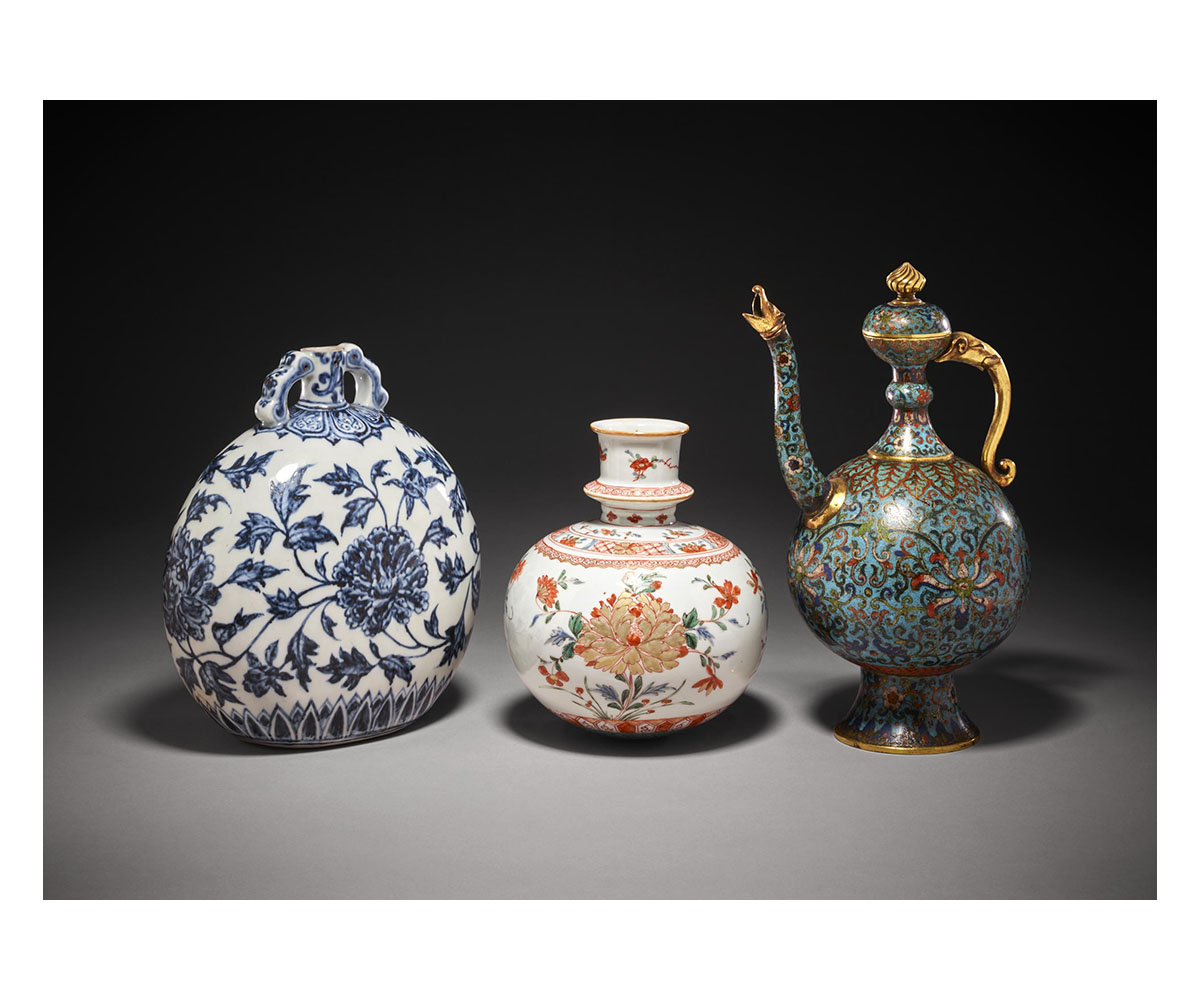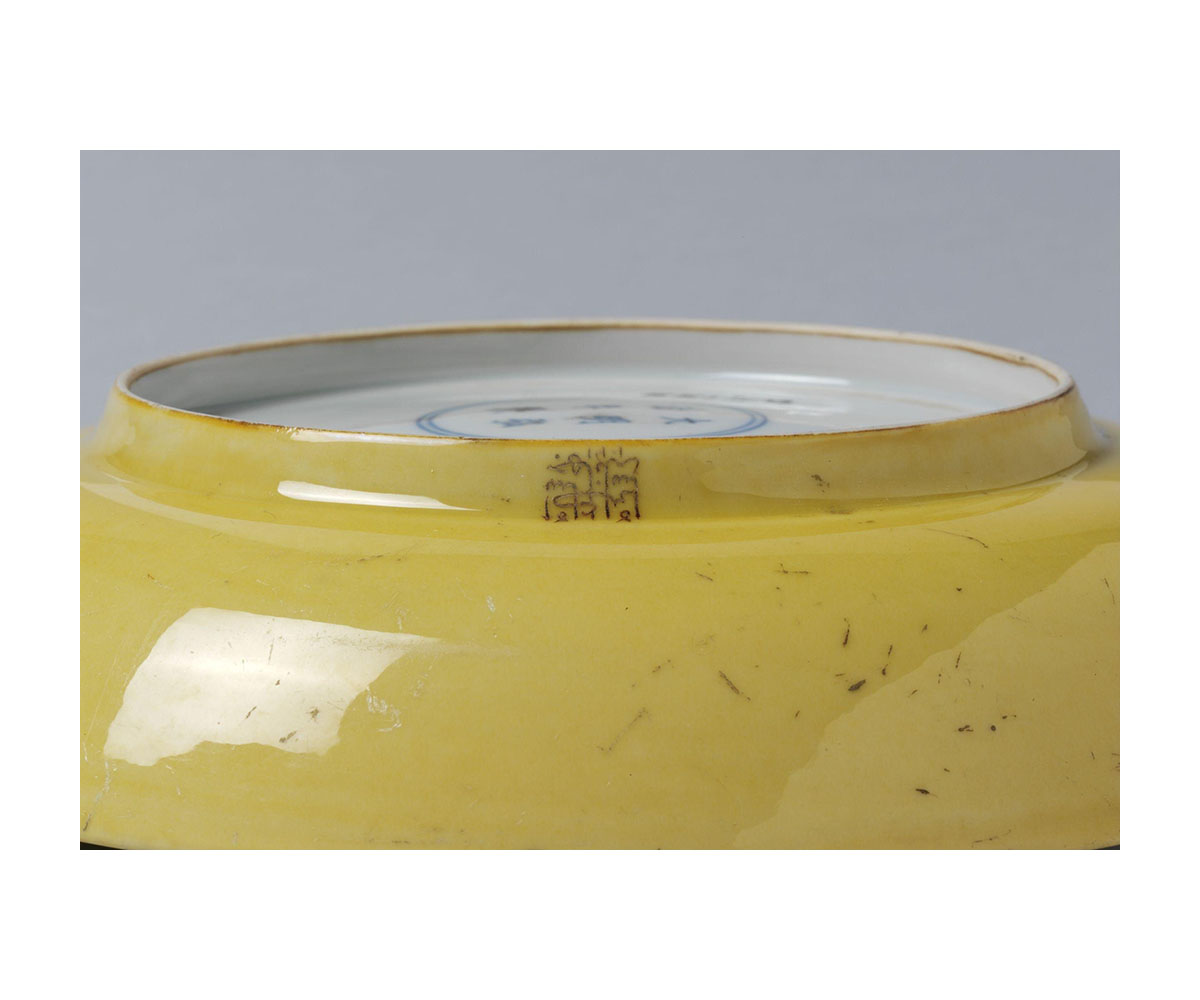PERSPECTIVES
Collecting Chinese Porcelains in the Persianate World
“At the break of dawn, the cat of bright good morning sprung up [upon] the chini-khana of the azure heaven, and overturned the shining stars, the imperial Chinese vessels, from their heavenly niches.”
– Badayi’ al-vaqayi’, Zayn al-din Mahmud Vasifi
Despite the flowery language of this verse, Zayn al-din Mahmud Vasifi, the sixteenth-century Persian historian who penned these lines, must have felt no small degree of annoyance at his cat. Early one morning, it had gotten into his chini-khana — a wall with small niches meant to display Chinese porcelain — and shattered them, costing him a small fortune.
In creating such a collection, Vasifi had been engaging in an activity familiar to his contemporary elites across the Persianate world. From the Balkans to Iraq and Iran through South Asia and East Africa, nobles and emperors of the sixteenth century were collecting Chinese porcelain as emblems of wealth and taste. Such activities were not a novelty. Chinese ceramics have had a long and rich history within the broader context of Eurasian trade. From at least the eighth century and possibly earlier, networks of merchants across the Indian Ocean had been acquiring ceramics from China for sale in West and South Asian markets. A particularly striking example of this phenomenon comes from the Belitung shipwreck, discovered off the coast of Indonesia. The ship, which sank in the mid-ninth century, contained nearly 60,000 ceramic bowls produced in Changsha in southern China and intended for West Asian customers.
The scale of the ceramic trade grew with the establishment of the Chinese Mongol Yuan Dynasty in the thirteenth century. The Yuan were particularly active in their engagement with Ilkhanid Iran and with the polities of the Indian Ocean; archaeological evidence from the southeast shore of India shows a significant increase in the number of pottery sherds dating to this period. The ceramic trade had been primarily in the hands of private suppliers up to this point, but that changed after the Yuan were overthrown by the Ming Dynasty in the late fourteenth century. The Ming took over the ceramic trade, establishing imperial factories to produce high-quality porcelain with a fine blue and white finish. Ming porcelains — expensive and difficult to produce — were often used as diplomatic gifts by the imperial court. They entered Indian Ocean trade networks by the fifteenth century and rapidly became sought-after treasures. Timurid Iran, where Vasifi (and his cat) were active, seems to have seen the earliest chini-khanas; various princes descended from the Mongol conqueror Timur competed to acquire porcelains as a means of displaying their wealth and status. The practice continued after the fractured principalities had been conquered by the Safavid Empire: the Safavid Shahs and their rivals, the Ottoman Sultans, used them in diplomacy and even sought to secure them as war booty. The Safavids built expansive wooden chini-khanas in their palaces to impress visiting dignitaries.
The Mughal emperor Jahangir, also a rival and contemporary of the Safavid Shahs, was known to have had a marble chini-khana set up in the Agra fort. Many pieces in his collection were Ming porcelains; they were already a century old when he obtained them and had them inscribed with his name. This phenomenon is especially apparent in the painting “The Rulers of the Mughal Dynasty from Babur to Awrangzeb, with their Ancestor Timur”. Blue-and-white porcelains are positioned at the centre of the composition, just under the haloed Timur. Timurid princes, briefly mentioned above, often tried to collect porcelains that belonged to ancestors or family. This tradition was continued by the Mughals. The portrait depicts not only the Mughals’ descent from Timur but also physical objects that may have once belonged to him that they had acquired. It is possible that other Persianate courts in the subcontinent also had chini-khanas. The palace complex of Golconda Fort, belonging to the Qutb Shahi dynasty of the Deccan, features multiple arches with display niches; their contents were likely looted by the Mughal emperor Alamgir (Aurangzeb) in 1687.
A similar chini-khana, precariously stacked with porcelain, can be seen in the background of the painting “Jahangir Weighing Prince Khurram Against Gold and Silver”. Khurram (the future Shah Jahan) would continue collecting and inscribing these objects, as would his successor Aurangzeb. With the insignia of many owners on them, porcelains became objects not only of prestige and beauty but also symbols of inheritance and lineage. While they once served as a way for Mughal emperors to underscore their place within global networks of trade, today, Ming vases are still objects that are coveted by collectors and sold for millions of dollars through auction houses across the world.
Bibliography
Ahmad, Neema. “Surface Decoration on Jahangiri Monuments at Agra: A Case Study of Wall Paintings.” Proceedings of the Indian History Congress 72 (2011): 1254–62. http://www.jstor.org/stable/44145737.
Chida-Razvi, Mehreen. “From Function to Form: Chini-khana in Safavid and Mughal Architecture.” South Asian Studies 35 (2019).
Denise-Marie Teece, “Monsoon Winds and Ming Porcelains: Collecting and Displaying Chinese Ceramics at the Mughal Court,” Khamseen: Islamic Art History Online, March 10, 2022. https://sites.lsa.umich.edu/khamseen/topics/2022/monsoon-winds-and-ming-porcelains/.
Krahl, Regina. “Porcelain Diplomacy. The Mahin Banu ‘Grape’ Dish.” 2015. Accessed May 7, 2024. https://www.academia.edu/43392466/Porcelain_Diplomacy_The_Mahin_Banu_Grape_Dish.
Pinder-Wilson, Ralph, and William Watson. “An Inscribed Jade Cup from Samarqand.” British Museum Quarterly 23, no. 1 (1960): 19–22. https://doi.org/10.2307/4422656.
Schmidt, Esther. “Negotiating Cosmopolitan Taste with Local Culture: Porcelain Rooms in Indian Forts and Palaces.” In Global Goods and the Country House: Comparative Perspectives, 1650-1800, edited by Jon Stobart, 307–30. London: UCL Press, 2023. http://www.jstor.org/stable/jj.3508397.28.




